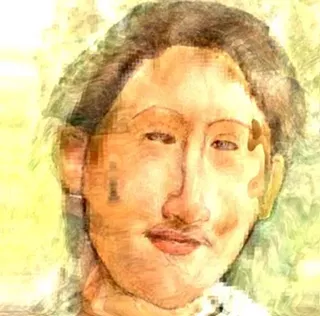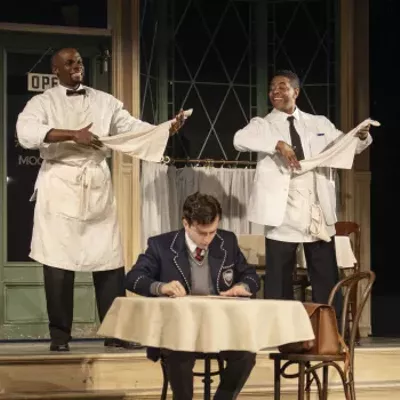"The Latin American way of performance has its own little tricks," he said by phone from Mexico City, where he is the music director of the Orquesta Sinfónica Nacional de México. "The rhythmical things cannot be written properly. It's something you have to have in your blood; it's something you have to teach like an accent, like teaching somebody who speaks Spanish to say 'thank you' instead of 'tank you.'"
The guest conductor--who was recently named music director of the Long Beach Symphony Orchestra--has been carefully leading the TSO bar by bar through idiomatic preparation of music by the likes of Brazil's Heitor Villa-Lobos and Argentina's Astor Piazzolla and Alberto Ginastera.
Diemecke appeared in Tucson in 1992 and 1999, on both occasions with his Mexican orchestra in crackling all-Mexican programs. Given this pattern, Tucsonans may wonder if Diemecke ever conducts the standard works of, say, Beethoven or Ravel. Does he worry that people will think he has too limited a range?
"Actually, I don't mind doing this repertoire," he said, "but I don't really do it so much. In Mexico, for example, out of the 16 or 17 weeks I conduct here every year, only two or three concerts would be Latin American music. The rest is the standard repertoire." Not only that, but Diemecke tends to devote whole seasons to a certain composer's symphonic cycle, from Beethoven, Brahms and Tchaikovsky to Mahler, Prokofiev and Vaughan Williams. "My repertoire goes from the Renaissance period to the most modern pieces," he said.
Diemecke is also a composer. In his 1999 visit he led the Orquesta Sinfónica Nacional in a piece he'd written to tie in with a recent World Cup in which the Brazilian team lost; he therefore based the work on the Dies Irae from the Gregorian Mass for the Dead, wrapped it up in Brazilian rhythms, and blew a referee's whistle while he conducted. The piece he's bringing to the TSO, Camino y Vision, should be equally whimsical.
The composition, which he translates as The Path and the Vision, was commissioned by the Cervantino Festival in Diemecke's home town of Guanajuato. Given the name of the festival, Diemecke turned to writer Miguel Cervantes for inspiration, and imagined what might happen if Don Quixote showed up in 21st-century Guanajuato.
Just as Cervantes appropriated and mocked ideas from popular romances, Diemecke has cribbed ideas from several leading composers. He mischievously announces Don Quixote's return to life with a theme lifted from Mahler's "Resurrection" Symphony. There are folk tunes from the Guanajuato region, while Don Quixote's Baroque origins are suggested by stealing a theme from Handel and dressing it up with maracas and bongos. Diemecke alludes to earlier Don Quixote-inspired compositions by Strauss and Telemann, and even quotes Man of La Mancha.
After further musical adventures, Don Quixote arrives in a plaza where rival gangs are fighting. Inevitably, the altercation is suggested by a mambo in the style of Leonard Bernstein. "West Side Story was the first film I saw when I was a kid in Guanajuato," Diemecke noted. The whole thing ends in a sly tribute to Mexican president Vicente Fox. "A year ago, President Fox, who is from Guanajuato, won the election, installed a new system and buried the old one," Diemecke explained. "That's why I use a foxtrot that's a parody of the funeral march from Mahler's Fifth; we bury the past, and then it's time for a big Mexican fiesta."
Mexico is not the only place south of the border to find a party, as the rest of the concert will demonstrate. "I chose different styles that would reflect the different way that these different countries would dance and would sing, how they created their culture and their music," Diemecke said.
Nationalism came late to Latin American classical music; the overture to Il Guarany, a 19th-century opera by the Brazilian Antonio Carlos Gomes, could pass for Bellini or Donizetti or some other old Italian.
Diemecke suggested that a trace of marinara remained even in the work of Astor Piazzolla, the brilliant and innovative late-20th-century master of "new tango." "A collision of cultures in Argentina created the tango," he said. "It was a combination of Italian song with flamenco dancing." The largely elegiac Tangazo is Piazzolla's orchestral treatment of the form.
The tango was Argentina's urban music; the folklore of the pampas is represented by the popular suite from Alberto Ginastera's ballet Estancia, which culminates in gaucho hoe-down.
Then there's Heitor Villa-Lobos' Bachianas Brasileiras No. 2, a suite that infuses Bach-like forms with Brazilian blood. "Villa-Lobos created a coalition of the sounds of Brazil, with the Afro influence, the Indian influence and the Portuguese influence," said Diemecke. "Fardos, bossa novas and sambas were being created in this part of the world, and are all stylized in the music of Villa-Lobos."







